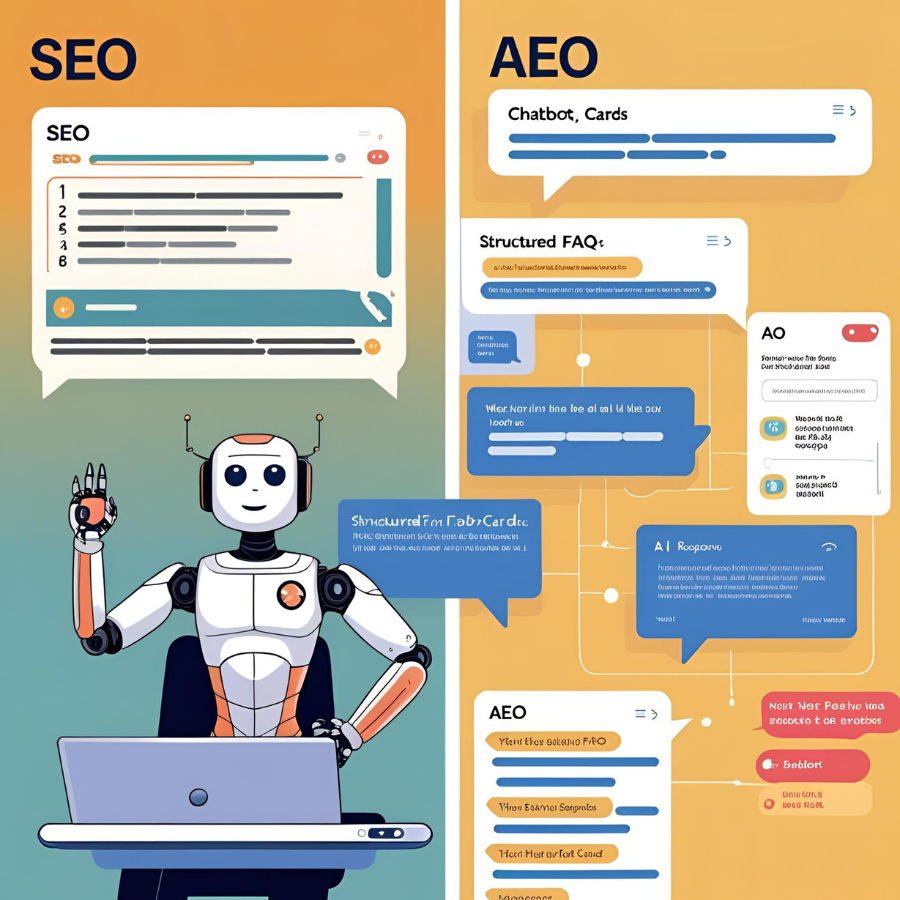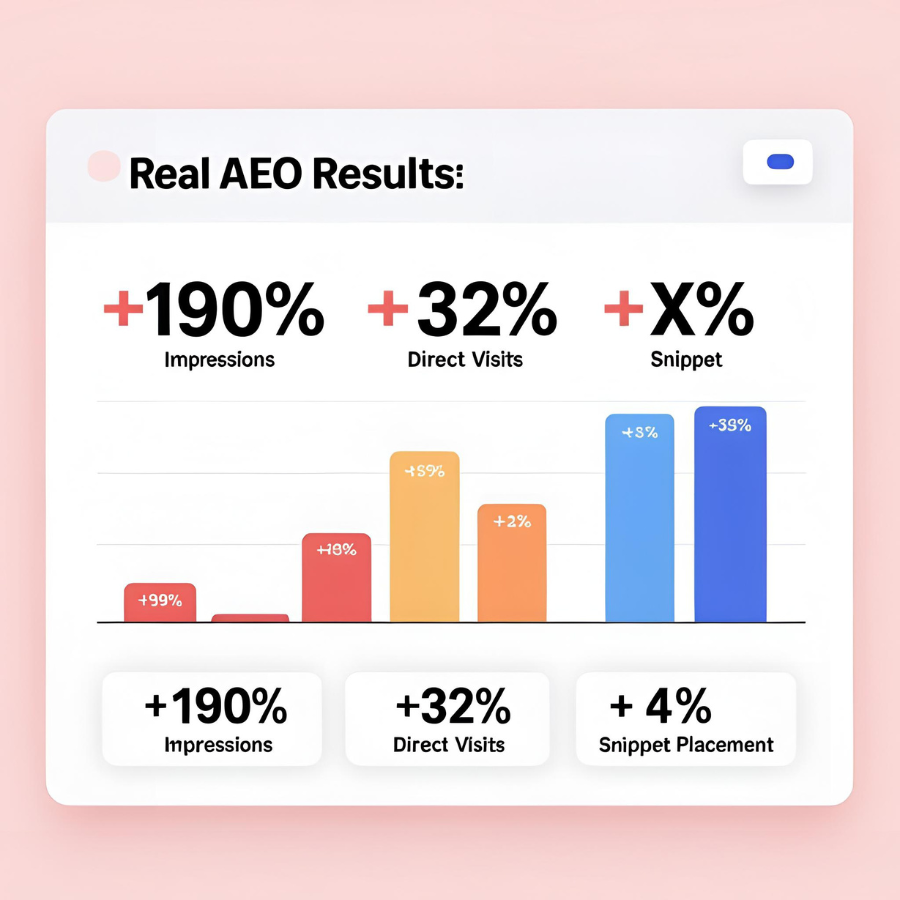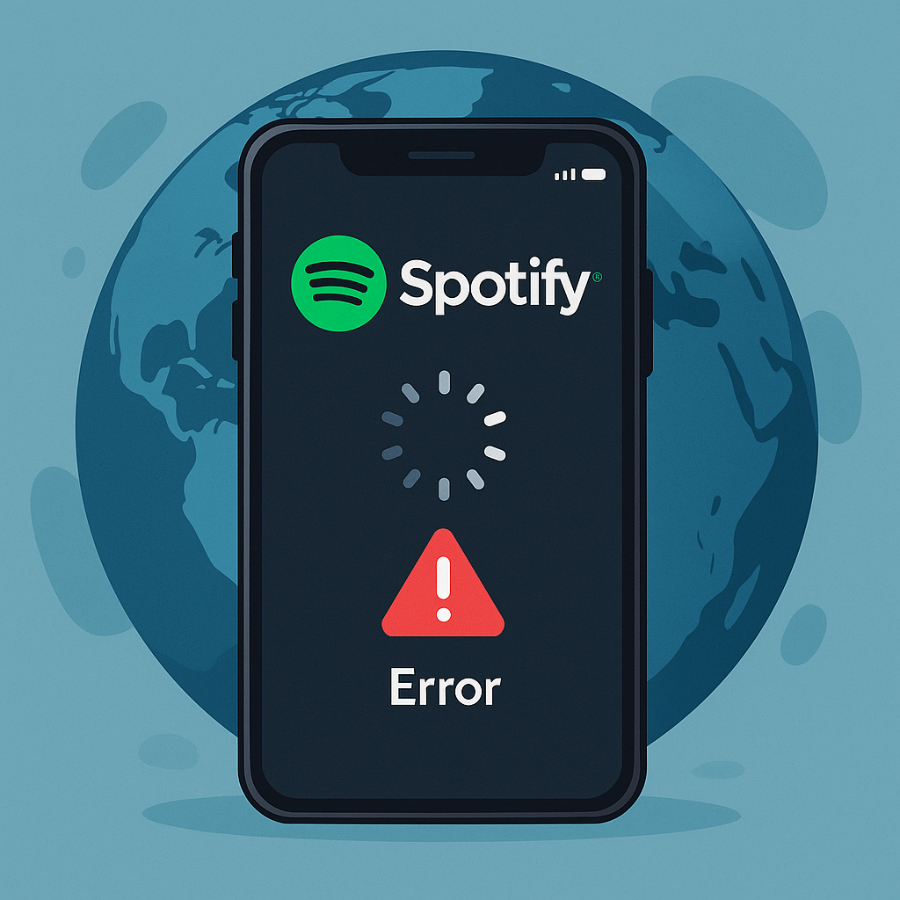Now Reading: Answer Engine Optimization (AEO): The Ultimate Strategy for Future Search Visibility
-
01
Answer Engine Optimization (AEO): The Ultimate Strategy for Future Search Visibility
Answer Engine Optimization (AEO): The Ultimate Strategy for Future Search Visibility

Introduction – From SEO to AEO: Why the Shift Matters
In today’s search landscape, users increasingly get direct answers instead of clicking through to a site. Voice assistants (like Siri or Alexa), AI chatbots (ChatGPT, Bard, Bing Copilot), and Google’s new Search Generative Experience (SGE) are changing how people search. This shift toward “answer-first” results means traditional SEO alone isn’t enough. We must now focus on Answer Engine Optimization (AEO) – optimizing content so AI-driven platforms can cite and display it as an answer. In fact, studies show around 65% of Google searches now end without a clickwritesonic.com. As Google’s SGE and other AI tools evolve, mastering AEO (answer-focused content) is essential for visibilitywritesonic.comseo.com. The future of search visibility belongs to brands that can serve instant answers.
What is Answer Engine Optimization (AEO)?

Answer Engine Optimization (AEO) means structuring and formatting your content so that AI-driven search tools (answer engines) can serve it directly as a response to user querieswritesonic.com. Unlike traditional SEO, which aims to rank pages on Google by targeting keywords, AEO aims to have your content picked up by answer interfaces. For example, a well-crafted FAQ page or tutorial might be used as a Featured Snippet on Google’s SERP or get cited by ChatGPT when a user asks a question. AEO works on “answer engines” like ChatGPT, Bing Chat, and voice assistants, focusing on conversational, question-based queries, rather than the keyword-based searches of classic SEOseo.com. In practice, AEO involves using structured data (schema), clear Q&A formats, and concise language so that virtual assistants can easily extract and deliver your answer. Think of it as optimizing for the position zero (the instant answer box) and AI chatbots rather than just ranking in search listingsseo.comwritesonic.com.
SEO vs AEO – A Side-by-Side Comparison
| Criteria | SEO (Search Engine Optimization) | AEO (Answer Engine Optimization) |
|---|---|---|
| Primary Goal | Improve rankings and drive traffic to web pages (clicks, impressions)seo.com | Provide direct answers in search results and AI assistants (mentions, citations)seo.com |
| Search Platforms | Search engines (Google, Bing, DuckDuckGo, etc.)seo.com | Answer engines/AI chatbots (ChatGPT, Bing Copilot, Google’s AI Overviews)seo.com |
| Query Type | Keyword-based queries (e.g., “best restaurants in Iceland”)seo.com | Conversational, natural questions (e.g., “What are the best restaurants in Iceland?”)seo.com |
| Content Focus | Detailed pages with keyword optimization, backlinks, comprehensive coverageseo.com | Concise, focused answers using lists, bullet points, clear Q&A structureswritesonic.cominsivia.com |
| Metrics | Rankings, impressions, CTR, organic traffic, domain authorityseo.com | Snippet/answer placements, mentions in AI results, referral traffic from answersseo.com |
| Examples | A blog post ranking on page 1 for a keyword | An FAQ answer shown in Google’s snippet or a response in ChatGPT |
| Tools | Google Search Console, Ahrefs, Semrush for tracking keywords and linksseo.com | Specialized AI-tracking tools (e.g., OmniSEO), schema validators, AI Monitoringseo.com |
Table: AEO vs SEO comparison (goals, formats, metrics)seo.comseo.com.

In summary, SEO still drives site traffic through listings and links, while AEO focuses on being the source of answers. One isn’t strictly “better”; rather, they serve different objectives. Traditional SEO is crucial for overall visibility and branded searches, while AEO is essential when users expect instant answers. Smart digital marketers will use both – writing strong content that ranks, and formatting it to be answer-ready.
Why AEO is the Next Big Thing in Digital Marketing
The rise of AEO isn’t hype – it’s driven by real trends. First, zero-click searches are exploding: a recent analysis found that about 65% of Google queries end without any clickbriskon.com. In other words, users often get answers right on the search results page via Knowledge Panels, direct answers, or AI overviews. Google and others are clearly moving toward an “answer engine” modelbriskon.com.

Second, voice and AI assistants are mainstream. It’s estimated that by 2025 roughly 50% of all searches will be voice-basedsinglegrain.com. Voice queries are more conversational (e.g. “how to rank for voice search?”), so sites need to sound natural and be easily spoken. At the same time, chatbots like ChatGPT (which has 400+ million weekly usersseo.com) and Bing Copilot are being used as search tools. Gartner even predicts that by 2026 about 25% of organic search traffic will shift to AI chatbots and virtual assistantsseo.com.
These shifts mean businesses must adapt to stay visible. In 2024, brands like NerdWallet saw site traffic drop even as revenue rose, underscoring that users are still engaging – they just do so via answers rather than clicksseo.com. Optimizing for traditional SEO only may leave you out of the picture when AI pulls answers. By embracing AEO (optimizing for direct answers, featured snippets, AI overviews and voice queries), companies can capture that new kind of visibility. As one SEO expert notes, AI, zero-click results, and voice are the “new norms” in search – we must optimize for all of them to thrivesinglegrain.com.
How to Optimize for AEO (Step-by-Step Guide)
Optimizing for answer engines builds on SEO fundamentals but with these added steps:

- Use Structured Data (Schema Markup): Add FAQ, Q&A, HowTo, Product, and other relevant schema to your pages. This “blueprint” helps search engines and AI assistants understand your content and makes it eligible for rich answersinsivia.com. For example, Google’s Structured Data Testing Tool (and Rich Results Test) can verify that your schema is correctinsivia.com. Proper schema makes it far more likely your content is featured in Google’s rich snippets or used by AI assistants.
- Answer FAQs in Clear Language: Write content that directly answers common user questions in a conversational tone. Use question-and-answer formats or FAQs. Search “People Also Ask” for your topics and craft clear, concise answers to those questions. This aligns with how chatbots parse info.
- Optimize for Voice/Search Intent: Use natural, long-tail phrases and include question terms (“how”, “what”, “why”) since people speak differently than they typesinglegrain.com. Make sure your page content addresses the user’s intent fully – cover the who/what/why, not just keywords.
- Create Concise, Authoritative Content: AI answer engines favor authoritative and factually-rich content. Provide concrete data, cite sources, and structure your info logically (bullet points, numbered steps, short paragraphs). The answer should be obvious at a glance.
- Structure Content for Snippets: Break up your content with subheadings, bullet points and numbered lists. These formats are exactly what featured snippets and voice assistants pull. A short paragraph or list that directly answers a query stands a good chance of being used as an AI answer.
- Optimize Headlines and Meta: Even if your answer might be served above the click, well-crafted titles and descriptions still matter (they can encourage clicks when answers are shown). Use schema-friendly titles (e.g. include questions or definitions) and ensure meta descriptions clearly summarize your answer.
- Track Conversational Queries: Use tools or analytics to monitor how your content is appearing in AI-driven results. For example, Google’s AI Overviews report (in Search Console) or third-party tools like OmniSEO can show if your page is being used by chatbots.
In practice: focus on user-centric phrasing and formatting. For example, BrainStak’s own guides employ these tactics – one article clearly explains how AI extracts text from images, using bullet lists and clear subheads to make each answer step stand outbrainstak.com. That kind of format is exactly what answer engines want.
Real-Life Examples of AEO in Action

- Featured Snippets & People Also Ask: About 75% of mobile searches now include a “People Also Ask” box, and roughly 20% of searches trigger a featured snippetbriskon.com. These are prime examples of AEO. If your page answers a question authoritatively (in one sentence or a list), Google may display it at the top. For instance, a recipe page might show its ingredients list as a featured snippet, or a FAQ answer might appear directly in the search results.
- Google’s AI Overviews (SGE): Google’s new generative search (SGE) often presents a concise summary or comparison at the top of the page. It might answer “Bryce Canyon vs Arches” in one combined answer. Optimized content that directly compares topics or lists pros/cons can be pulled into these AI snapshotsblog.google.
- AI Chatbots (ChatGPT, Copilot, Bard): When you ask ChatGPT for a factual question, it often cites a source or summary. Early findings suggest it favors well-structured, factual content. For example, if a finance blog itemizes steps to save money, ChatGPT is likely to echo that as an answer. In one case study, a company rewrote content specifically for chatbot queries and landed on ChatGPT’s front page answer list, greatly boosting their visibility.
- Case Study: One financial services site optimized several pages for AI Overviews and featured snippets. The result? They saw a 190% increase in branded search impressions, a 32% rise in direct visits, and higher conversions on those pagessinglegrain.com. This shows that AEO optimization can lead to large gains, even if traditional click-throughs drop (since the answers themselves drive brand awareness and direct traffic).
In short, wherever an AI or voice assistant is serving answers, well-optimized content can be “discovered.” Featured snippets (Google), Knowledge Graph panels, Siri/Alexa voice answers, and AI summaries all rely on the same principle: clear, factual answers presented in a structured way.
Tools & Strategies to Win at AEO
Schema & Structured Data Tools:
Use tools like Google’s Rich Results Test or schema generators (e.g., Merkle’s Schema Markup Generator) to add and validate structured data on your pages. WordPress sites can use plugins (Yoast SEO, Schema Pro, etc.) to embed FAQ and HowTo schema easily. These help search engines pinpoint answerable content.
Answer/Search Query Analyzers & Content Testing:
Use keyword research tools (Ahrefs, Semrush, even AnswerThePublic) focused on question queries. Some new tools track AI mentions in ChatGPT or Bing for example, OmniSEO™ reports if your content appears in AI chatbot answers. Monitor Google’s AI Overviews in Search Console. Use tools like SEMrush’s Sensor or Google Trends to track changes in answer features. Continuously test Q&A formats on your pages and tweak based on visibility.
Strategic Tips:
Aim to appear in Google SGE by emphasizing E‑E‑A‑T (Expertise, Authoritativeness) in your content, since AI features often highlight authoritative sources. Optimize for freshness (AI favors current info). And don’t overlook multi‑channel presence AI answers can pull from social, video, and other platforms, so maintain visibility everywhere.
Future-Proofing Your Strategy – Merging SEO and AEO

AEO shouldn’t replace SEO; it should complement it. Traditional SEO (quality backlinks, optimized content, good site speed) still matters for overall search visibilitysinglegrain.com. The key is balance. Continue targeting valuable keywords and building authority (E-E-A-T), but format that content to answer questions. For instance, a long-form blog post can simultaneously rank for keywords and contain sections optimized for snippets.
Think omnichannel: as one SEO expert advises, we must embrace AI tools while maintaining human expertise, and optimize for voice and zero-click along with classic SEO practicessinglegrain.com. In practice, allocate some content to be answer-oriented (e.g. dedicated Q&A pages, concise explainers) and some to rank via deeper content. This way you capture traditional clicks and the new answer-based interactions.
As algorithms evolve, keep an eye on updates. Google’s continued emphasis on helpful content (E-E-A-T), Microsoft’s AI search experiments, and emerging voice platforms mean adaptability is key. By building both keyword-rich content and answer-focused content, you ensure your site remains visible whether the user clicks or simply listens to an answer.
Final Thoughts: Is Your Website Ready for the Answer Engine Era?
Search is changing fast, but the solution is clear: Adopt AEO alongside SEO. Ensure your site’s content is authoritative, well-structured, and framed as clear answers. Use schema markup and conversational tone to cater to AI and voice queries. Remember that humans still decide what’s useful, so maintain high-quality content.
The websites that thrive will be those that serve users both as a search result and as the definitive answer. Start by auditing your top-performing pages: can any of them be reformatted as quick answers? Add FAQ sections or concise summaries where appropriate. Write some conversational Q&A content. Test it in Google’s snippet preview or ask ChatGPT your questions to see if your content surfaces.
In summary, Answer Engine Optimization is the future of search visibility. Brands that optimize for AEO will capture attention in AI-generated results and voice assistants, even when clicks decline. By embracing AEO best practices – alongside solid SEO – you’ll stay ahead of the curve. Is your website ready to become the answer the searchers and AI assistants are looking for?


























